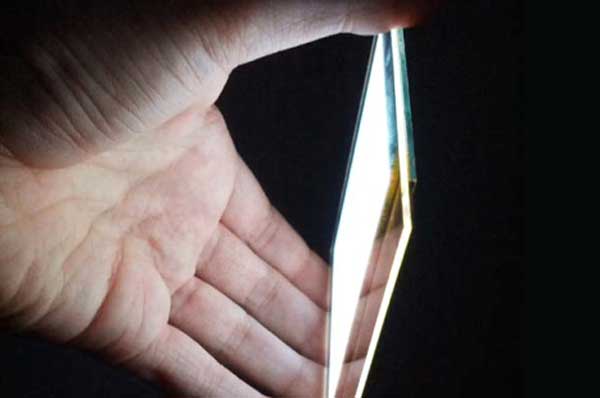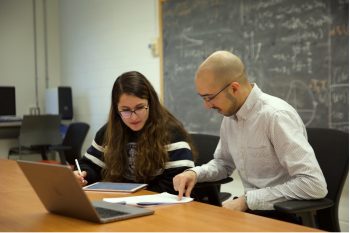Doing more with less is the future of lighting. As smart novel lighting technologies use less energy to shine brighter, it’s also a trend that flipping the switch in homes and businesses around the world.
It’s known as smart sustainable lighting, and researchers from the University of Toronto are leading the charge in design and production of this burgeoning field. This month, U of T’s Smart Sustainable Lighting Network (SSLNet) is bringing together key players in the field for a dynamic conference connecting researchers, industry, entrepreneurs and more.
“Smart sustainable lighting is important because energy-efficient products are the easiest and cheapest way to combat climate change, rising energy costs and increasing energy demand,” said Elyse Henderson, SSLNet’s special initiatives coordinator.
Taking place from August 18 to 20, Henderson says the conference is meant to catalyze Canada’s smart sustainable lighting interests around the future of LED devices, lead to even more innovation, and “take advantage of this growing industry to make Canada a key player.”
Writer Brianna Goldberg learned more about U of T’s role in the field from SSLNet founder, Venkat Venkataramanan. Venkataramanan is also founder of Lumentra, a U of T-nurtured startup that focuses on improving thermal management in LEDs, and he serves as director of scientific operations at U of T’s physical sciences entrepreneurship hub, The Impact Centre.
What’s the most exciting ‘smart sustainable lighting’ research going on at U of T?
U of T researchers are at the forefront of solid-state lighting technologies. Professor Zheng Hong Lu’s (MSE) group has set the world record in efficiency for lighting devices under laboratory conditions, and they are developing next-generation devices like flexible lighting. Professor Tim Bender (ChemE), and Professor Cynthia Goh with the Department of Chemistry are developing novel materials for enriched lighting. Professor Olivier Trescases (ECE) is leading efforts on smart power supplies for LED lighting. My own research focuses on improving the colour quality of LED lighting and efficient thermal management in lighting.
How does this research expertise end up affecting everyday life for consumers?
The Impact Centre’s lighting lab is the home of the Smart Sustainable Lighting Network. Through its collaborative research and development efforts, the lab has helped Canadian manufacturers create better lighting products for automotive, architectural, display, industrial automation, medical and mining lighting products. The Impact Centre’s SSLNet has helped establish Toronto as a major world-class hub at the forefront of energy efficient lighting.
What are some of the ways we might see this lighting research being championed by U of T entrepreneurs?
Professor Lu’s technologies for improving Organic Light Emitting Diodes are being commercialized by a U of T engineering alumni alumni Michael G. Helander (EngSci 0T7, MSE PhD 1T2) and Xiaofeng Terry Xu (MASc MSE 1T2), through the spin off company OTI Lumionics. Another spin off, Lumentra Inc, is developing efficient thermal management methods for LED lighting. A group of former U of T engineering students, Gimmy Chu (ElecE 0T6), Tom Rodinger (IBBME PhD 0T7) and Christian Yan (ElecE 0T6), now manufacture and sell the world’s most energy-efficient light bulbs under the label of Nanoleaf.





